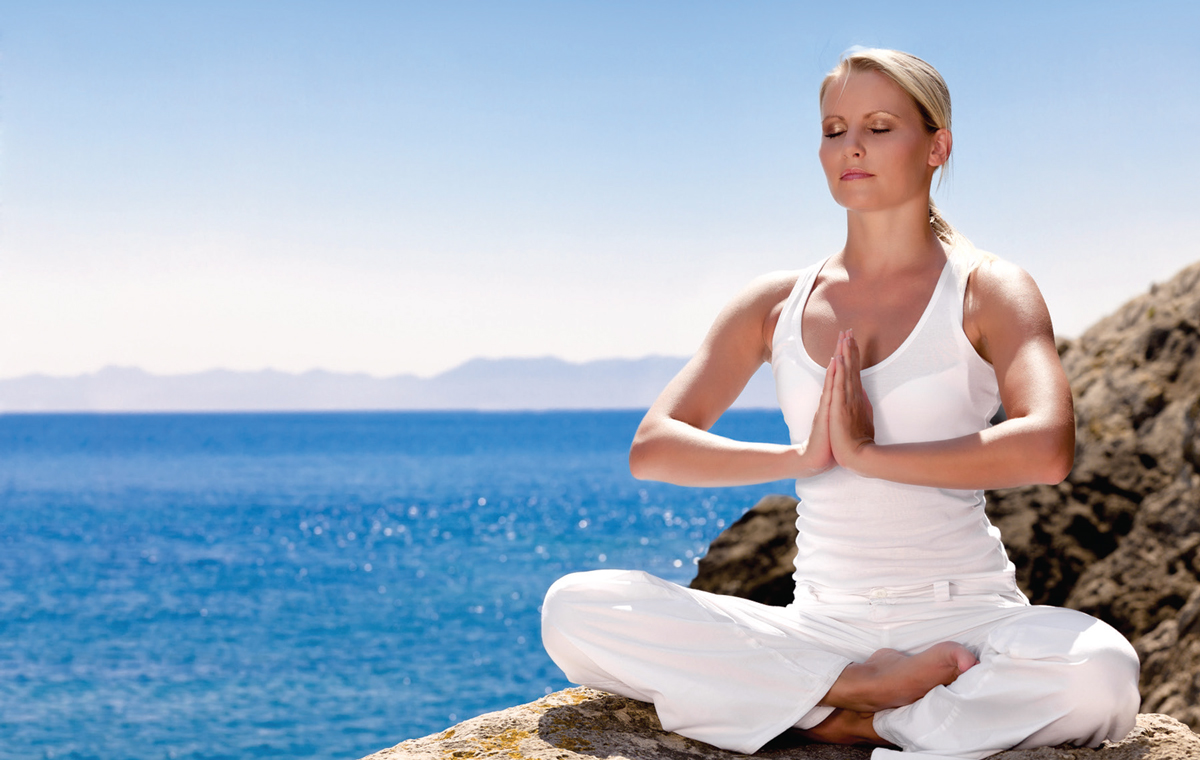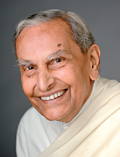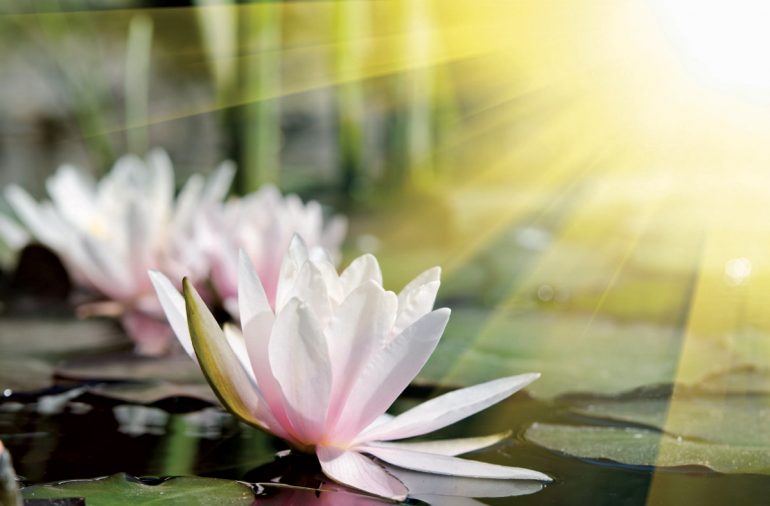We live in a world of enticement and entanglements. The sharp arrows of desire, raving, passion and pride, ignorance and anger, hatred and greed, wound our souls, again and again. Our souls bear the scars of many wounds: they need to be healed. Silence is the great healer. We must take a dip every day in the waters of silence if we wish to be healed, cleansed, ennobled, and strengthened for the daily tasks of life.

While many regard meditation as a difficult art, in itself it is so simple. Meditation is directing our attention to eternal things and keeping it there for a while. Within every one of us is a realm of peace, power, and perfection.
To know what meditation is, we need to go within ourselves and, in the words of Sadhu Vaswani, “sink deeper and deeper.” No one else can do that for us; we need to do it ourselves. We need to silence the clamor of our unruly minds. We need to strip of all pride and passion, selfishness, sensuality, and sluggishness of soul.
People often complain of mental and physical exhaustion; young executives face the problem of ‘”burn out;” many “successful” men and women complain that they wake up every morning with stress. They are unable to sleep peacefully at night, thus depriving the body of the rest and relaxation it needs. Physical strain and mental worries add to this condition of feeling “drained.” Meditation gives our nervous system an extra period of deep rest during our waking hours. So, if one meditates twice a day, one can actually compensate for a bad night’s lack of sleep, thus making the day more productive.
For those of us who rely on statistics, researchers have measured the comparative benefits of sleep and relaxation through meditation. It is said that it takes four or five hours of good sleep to produce a drop of 8 percent in the metabolic rate; whereas during a 30-minute meditation, we achieve a drop between 10 percent to 20 percent. The slowdown in metabolic rate is, of course, related to the relaxation of the body.
Meditation begins with relaxation. Most of the time we are tensed without realizing it. Even when we go to sleep, our body and mind are not relaxed and we carry the tension of the day with us. As a result, we do not have restful sleep. We wake up the next morning with a feeling of languor or fatigue. We do not feel fresh and strong to meet the challenges of the new day. This goes on day after day, and the tension keeps on accumulating, until it manifests itself in one physical illness or another. So many diseases of the present day—heart attack, high blood pressure, nervous breakdown, migraine, asthma—are due to the building up of tension. It has been rightly said that “people do not die of disease: they die of internal combustion.” The demand for tranquilizers increases day by day. What is needed is to relax—if possible, twice every day.
There are many methods of relaxation; each person must follow the one that best suits him or her. Here is a simple, easy method:
Step No. 1: The first step is relaxation. Relax every muscle. Relax every limb. Relax every nerve in the body. Make it tension-free. If you like you can mentally picture the body in the form of a huge sack of potatoes. The sack is cut in the middle allowing the potatoes to roll out. How relaxed is the empty sack. Let the body feel relaxed likewise. Relax! Relax! Relax!

Now let the mind be free of worries of the past or fear or expectations of the future. Let us live in the present. The here and the now.
Sit in a comfortable posture so that you will not need to change it for a period of about 10 to 12 minutes. Sit comfortably, preferably in a cross-legged position and keep your spine erect. If you so choose, you can sit in a chair, keeping your spine erect and your feet gently touching the floor. Now take in three deep breaths. As you breathe deeply, be relaxed. Begin! Breathe in slowly, evenly, deeply.
Now exhale, slowly and completely.
Inhale…Exhale…Inhale…Exhale.
Step No. 2: Picture yourself standing on the seashore, before you the vast deep blue ocean stretches endlessly. On the shore is a sturdy rowing boat, ready to go out to sea.
Scattered at your feet are numerous seashells, seaweed, and other flotsam that you normally find at the beaches. These infact are symbolic of the mess in your life due to the unsolvable problems you are dealing with. Visualize yourself beginning to work systematically. Gather the debris all around you and put them together in a carton, container or box that has been left on the beach for you and for this purpose. Working patiently and quietly, clean up and clear the small stretch of beach that you are standing on. Pile all the stuff into the carton and put it on the boat. Now picture yourself rowing out into the sea in the boat. This is a beautiful fantasy, so you can take it for granted that you are an excellent boatman. Enjoy the brilliance of blue waters all around you and the vast canvas of the sky above. When you have rowed enough, dump the contents of the carton – seashells, seaweed, and flotsam and watch them float, sink, and disappear into the depths. Make sure the carton is absolutely empty. Now row back to the beach, enjoying a sense of freedom and peace. Your problem is nonexistent.

And now we come to the last step. As you breathe in, feel a sense of peace and calm. As you breathe out, feel a new courage and confidence in yourself and the world around you.
Rub the palms of your hands together, place them gently on the eyelids and gently, very very gently, open the eyes. Peace…
 Universally acclaimed humanitarian, philosopher, educator, writer, orator and non-sectarian spiritual leader, Dada J. P. Vaswani headed the Sadhu Vaswani Mission. He was a recipient of the Paul Harris Fellowship, Prani Mitra Award, U Thant Peace Award, and Sant Shri Dnyaneshwar World Peace Prize. Dada authored over 85 books in English, many which have been translated into international languages. sadhuvaswani.org
Universally acclaimed humanitarian, philosopher, educator, writer, orator and non-sectarian spiritual leader, Dada J. P. Vaswani headed the Sadhu Vaswani Mission. He was a recipient of the Paul Harris Fellowship, Prani Mitra Award, U Thant Peace Award, and Sant Shri Dnyaneshwar World Peace Prize. Dada authored over 85 books in English, many which have been translated into international languages. sadhuvaswani.org







